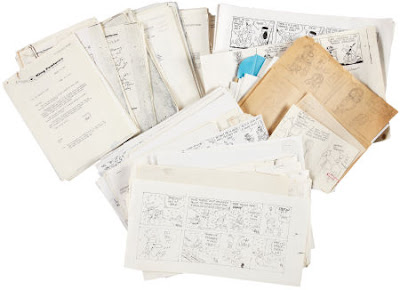
Feb. 5, 2010
Posted by Noah
The mintiest little Batman book
the public's ever seen
Whoever walks with this baby
will be feeling quite sanguine...
Okay, okay... so I'm not much of a poet, but you have to give me credit for using sanguine...
Speaking of sanguine, I daresay Heritage's comics department is sporting a collective smile these days. Think about it: The auction literally just opened to bidding a few days, online no less, and the bidding jumped immediately to $286,000 before moving one more notch this afternoon. There is little doubt that this book is going to surpass the record price ever paid at public auction for a comic book, and rightly so. It's a beauty.
Let's try this again:
Oh comely Detective #27
with your yellow cover still bright
you are the hobby's Holy Grail
let your price now take record flight...
Better? I didn't think so...
Facts, though, is facts, and this little comic, bought back in the 1960s by a savvy collector for about $100, is now a thing that rivals the prices paid for examples of artwork from important American painters and furniture makers. This is a storied item that speaks of a vastly different world - an era when America was quickening toward war with Germany and the public zeitgeist was indeed in need of a somber savior - that is somehow still very relevant to the war torn world of today.
My favorite take on this comic potentially setting the world record for price is that it proves, if only for now or a few years, that Batman is simply more relevant to society today than Superman. I know it's not really fair to compare this comic book with the Action #1 that sold last year for $317,000, because the grades were different - and if an 8.0 Action #1 showed up then that would probably eclipse this record - but I'm going to do it anyway.
In 2010 the general populace loves its superheroes to be flawed, plagued by doubt and conscience, in short, human. Superman is not a human, and he is almost invincible. Batman? Very flawed, even fragile, despite his incredible gadgets and intellect. Batman could easily have been destroyed many times over if only one of his foes had simply killed him on the spot instead of leaving him in a deadly, but slow, trap. That, however, is also Batman's particular luck, and don't we all live our lives in the same way - in one sense or the other?
No? Not you... Oh well... I was speaking metaphorically, of course.
Now if you'll excuse me, I have to make my way out of the ropes binding me to this giant Jack-In-The-Box, painfully plinking Pop Goes The Weasel, before it pops open, pops up and smashes me to bits in the jagged refuse of the Joker's abandoned toy factory hideout... At least that's how my commute home through Dallas traffic sometimes feels...
To leave a comment, click on the title of this post.
-Noah Fleisher
 February 25, 2010
February 25, 2010













